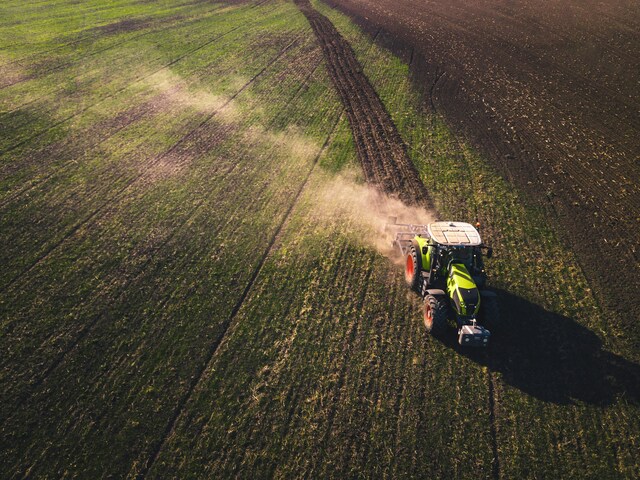
Supply ‘fragility’ creating volatility in urea market
Global urea supplies currently sit in a fragile state, with several key suppliers exporting lower volumes year-on-year, which creates a “ripple effect” for available volumes for Australian fertiliser importers, Rabobank says in a newly-released report.
The agribusiness banking specialist says urea is by far the most widely-traded fertiliser in the world and, for Australia, represented nearly half (46 per cent) of total fertiliser imports in 2024.
In the report, What tight urea supplies mean for global prices and Australian farmers, the bank’s RaboResearch division says due to minimal volumes of urea produced domestically, Australia is particularly sensitive to global events.
Report author, RaboResearch farm inputs and commodities analyst Paul Joules said the urea market is expected to remain volatile due to complex supply chains and geopolitical influences, with prices elevated compared to historical averages. “Ongoing supply issues in key exporting regions and the sensitive nature of natural gas markets – the predominant feedstock for urea production – suggest that urea prices will likely stay high,” he said.
Mr Joules said given complex supply chains, urea prices tend to trade with considerable volatility. “At present, prices are trading around the five-year average. However, if we were to compare current prices with the pre-Russia-Ukraine war five-year average price, they are 40 per cent higher,” he said.
Australian meat well-positioned to adapt to dynamic global markets
The Red Meat Advisory Council (RMAC) and its members are disappointed in the United States’ decision to impose tariffs on Australian red meat exports destined for the US.
RMAC Chair, Mr John McKillop, said the decision to impose a 10 per cent tariff on goods imported to the US failed to recognise that Australian red meat contributes to stable food supplies and prices in the United States.
“While Australian meat exports will shortly be subjected to a 10 per cent tariff, there is no ban on Australian red meat and our trade with the US will continue.
“However, it remains a disappointing decision from the US, in stark contrast to our 20-year partnership under the Australia-United States Free Trade Agreement (AUSFTA),” Mr McKillop said.
“Last year, 2024, was a record year for Australian red meat exports, driven by strong global demand. Australian producers can be assured that we operate in a strong global trading environment with high demand for our red meat from over 100 markets.
“It’s critical to note just how diversified Australia is with our red meat exports. Other major markets include Greater China, Japan and Korea, worth A$3.9B, A$2.6B and A$2.5B respectively. The Middle East / North Africa Market is worth A$2B and offers demand growth opportunities.”
Summer rain drives rally in Queensland primary producer confidence
Sentiment among Queensland’s agricultural producers has climbed to a 12-month high, with the state recording among the highest levels of rural confidence in the country in the latest quarterly Rabobank Rural Confidence Survey.
Positive seasonal conditions were shown to be the key driver of the increasingly optimistic outlook in the state’s agricultural sector.
Queensland rural sentiment – along with Tasmania – was shown to be the second highest in the nation, trailing only South Australia, where farmers are optimistic of this year providing a turnaround from challenging dry weather conditions in 2024.
The quarter one survey, released today, showed the Queensland net rural confidence index had risen into “positive territory” at 10 per cent, up from -1 per cent in the December quarter.
Australian meat well-positioned to adapt to dynamic global markets
Australia’s peak red meat bodies have called for calm in response to heightened speculation about possible US tariffs on all imports.
Any new US tariffs on Australian meat would be a concern but, in a highly diversified global export market, quality Australian meat remains in strong demand. Industry will assess and respond as necessary if any concrete measures are applied to Australian exports.
Red Meat Advisory Council Chair, John McKillop, says industry has well established frameworks for presenting a unified approach on behalf of the whole supply chain.
“Australia’s red meat peak industry bodies have been actively engaged and working with key government partners and political leaders to ensure that the sector’s views are known, and that industry is equipped to respond to any changes to our export market access. We would ask that all stakeholders remain calm and not jump at shadows but wait until announcements have been made.”
Unpacking Ag: Farm input costs on the rise through 2025
In the latest episode of Bendigo Bank Agribusiness podcast, Unpacking Ag, Agricultural Analyst Sean Hickey discusses how farm expenses are set to increase across 2025, with inputs expected to sit slightly higher than last year.
The price of resources used in fertiliser production appears to have stabilised compared to what we saw between 2021 and 2023, when volatility was the name of the game.
With more than half our fertiliser imported, a lower Australian dollar is impacting our buying power with global trade generally done in USD.
Labour supply has been a significant challenge for producers, particularly those involved in the horticulture and wool sectors reliant on sourcing significant numbers of workers for a very short period of time.
Heading into 2025, the International Energy agency anticipates a slight lift in crude oil demand.
The median price per megalitre of water for irrigation trended higher over the last six months.
“Geopolitical uncertainty remains a factor as global fertiliser exporters including China, the EU and Russia remain embroiled in various trade issues, but an increase in the amount of Nitrogen-based fertiliser imported has maintained pretty decent price stability over 2024 and we see Nitrogen pricing trending higher over the next quarter before stabilising later in 2025,” Senior Agricultural Analyst Sean Hickey said.
Sustainable seaweed farming the way of the future
Seaweed farming could be the sustainable solution the world has been looking for, but new research from Monash University and the University of the Sunshine Coast suggests Australia has a long way to go before it can capitalise on growing global demand.
Exploring ways to grow the fledgling industry in Australia, researchers found key improvements to farming equipment and practices could provide the kick start it needs.
Lead researcher Dr Belinda Comerford, from the Marine Evolutionary Ecology Research Group at Monash School of Biological Sciences, said seaweed cultivation could be a gamechanger to meet Australia’s net zero targets and transition to greener industries.
“We have seen global production of algal aquaculture like seaweed increase 4.3 times in the past 20 years,” Dr Comerford said.
“This is an industry with huge potential, and something a country like Australia is well positioned to leverage, with an abundance of coastal land that is suited to seaweed cultivation.
Rabobank announces 0.25 per cent cut in variable base rate for rural loans
Rabobank Australia has announced it will reduce the variable base rate on its rural loans by 0.25 per cent per annum, effective February 28, 2025.
Rabobank group executive for Country Banking Australia, Marcel van Doremaele said the bank was pleased to be able to pass on the full 0.25 per cent rate reduction to its Australian rural lending clients, following the Reserve Bank of Australia’s decision to cut the official cash rate (OCR), announced this month.
“We are pleased to be in a position to pass on the full official cash rate reduction to our rural lending clients at this time. It will be a welcome reduction in costs, particularly when primary producers are still facing a relatively high-cost environment in terms of inputs, such as fertilisers, farm chemicals, fuel and freight,” he said.





